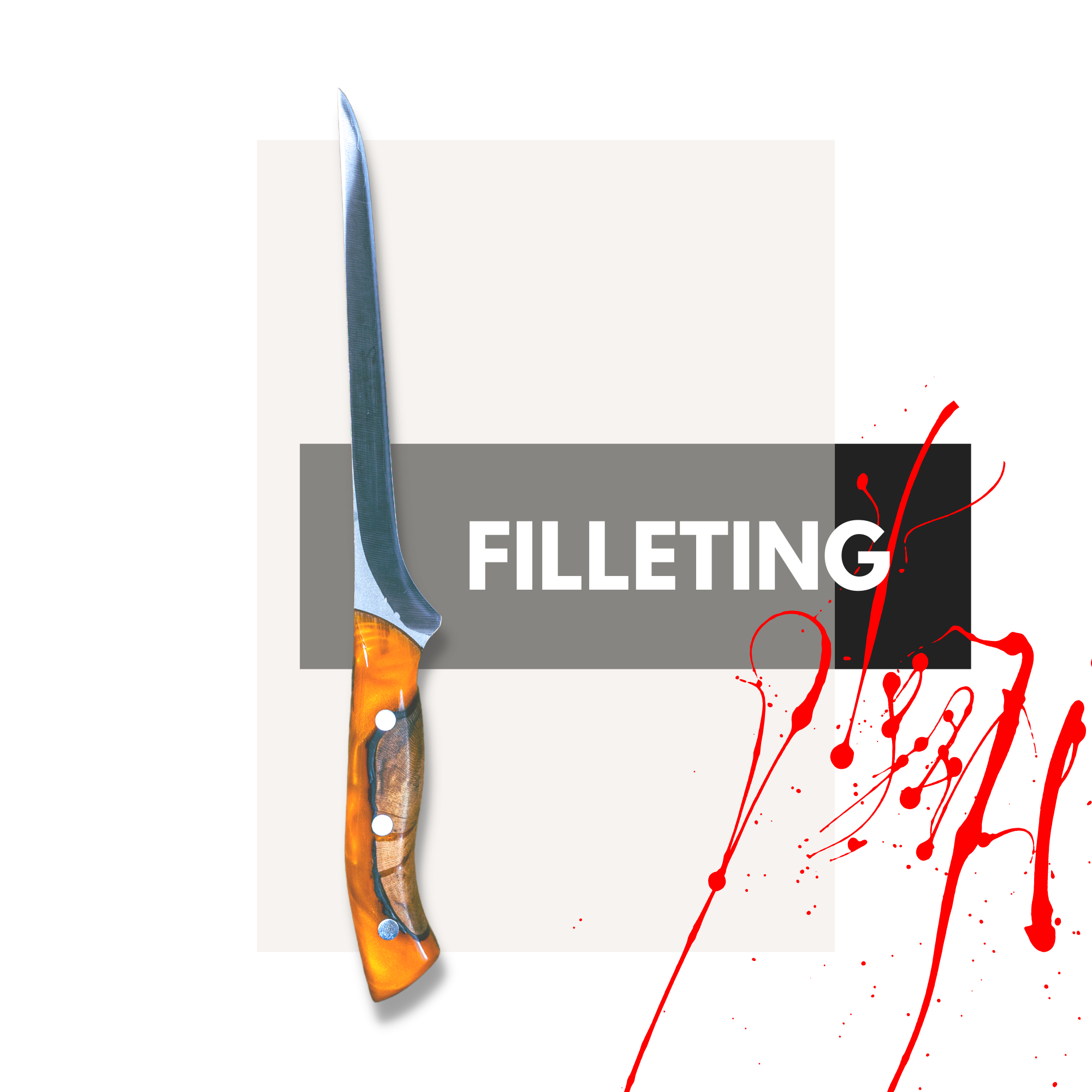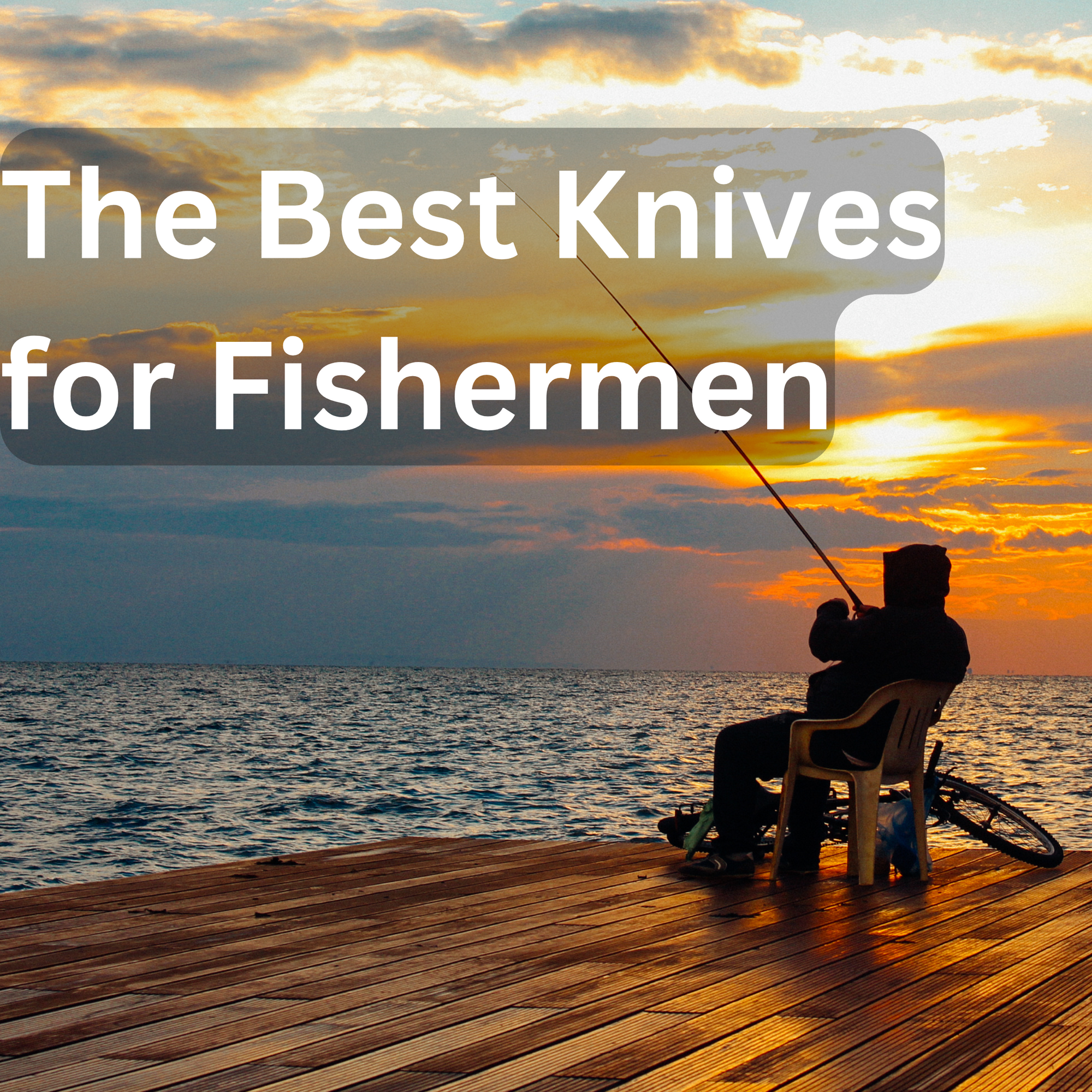Big Red Knives BBQ Collection:
Ah, spitting fires, smoking coals. On largest island that is also the smallest continent is there anything more Australian on this unique land than firing up the barbie and having a group of mates over for the arvo? These proudly Australian made and owned barbecue knives will elevate your outdoor cooking and dining experience to a level never before seen. Accessorise your Aussie dream with the manly and roguishly handsome Big Red Knives BBQ Collection. For knives like these, it’s not an expenditure, it’s an investment!
Filleting Knife | The “Barramundi” Knife
As our most requested knife over the past recent years this was a knife born out of great need and necessity. Hauls from South Australia’s clean marine waters are home to some of the most sought after, premium seafood in the world. Handling such fine catches cannot be done with just any knife of any make, it has to be a specialised precision tool. Working closely with our local fishermen this knife is a culmination of our skills as bladesmiths and their passion and experience in the art of fish preparation. Named after the hardy and much loved fish, the native Barramundi, our knife aims to be just that, the resilient people’s choice. With a Big Red Knives’ Barramundi Knife you will have a tool like Poseidon’s trident by your side to conquer the sea(food) at your will!
Use:
Fillet knives are used for separating meat from bone and skin, especially for fish. Of all flesh foods, fish is the most susceptible to tissue decomposition which is why the correct tool has to be used when preparing fish to produce a quality meal. The fine blade geometry of the Big Red Knives’ Fillet Knife was designed with a razor sharp cutting edge running along its prominent upward curve that cumulates into a fine incision tip, allowing for a whole fish to be easily prepared into individual pieces of its desired cuts. Traditionally, western fillet knives have a thin shallow-angled bevel that sacrifices durability for sharpness. This however is balanced out with our signature Big Red Knives’ use of Japanese high-carbon VG-10 hard steel as the performing edge with corrosion-resistant sandblasted stainless steel cladding as protection, ensuring a razor sharp edge with durability. In our design process we consulted and worked with our local South Australian fishermen to craft a final product that has the best length and the optimum amount of flex to get the job done with ease and precision! A finger guard was also added with slippery when wet in mind due to the nature of what you’re cutting, no design consideration amiss to make sure your digits aren’t missed!
The Barramundi:
The barramundi is also commonly referred to as the Australian sea bass and its native waters span from Northern Australia up to Southeast Asia. They live in both freshwater, saltwater and estuaries. Migrating from different waterbodies, the species can travel great distances in its lifetime with one tagged fish recording over 643 km (400 miles) in its journeys. The name barramundi is Australian Aboriginal for “large-scaled silver fish” and has a romantic Dreamtime story (Aboriginal folk/creation tale) attached to the name. In the story it was said that two young lovers were forbidden to marry as the woman was ordered to marry an elder of the tribe. Despite knowing defiance would be punishable by death the star-crossed lovers ran away from the tribe to the edge of a cliff. As the tribesmen with spears descended upon them the lovers knew the only way they could be together was to leap off the cliff and into the waters below. It is believed that the two lovers are still there to this day in the form of two barramundis and the spines on their fins are the spears thrown by the tribesmen.
Growing up to 1.8m in length (over 5’11) and 60kg (132 lbs) barramundi eat almost anything, from crustaceans, molluscs, smaller fish and even other barramundi. Much like this fish filleting blade, the barramundi is a formidable predator and has the ability to consume prey up to 60 per cent of their own body length. The barramundi is known for its voracious feeding reflex. Like the Big Red Knives’ Barramundi Knife the species will gobble up any small nearby fish during a feeding frenzy and has been known to cannibalise its own! With our thoughtfully designed finger-guard however, you won’t be accidentally become part of your meal!
BARRAMUNDI FACT: Barramundi is considered one of the most sustainable species of fish for aquaculture fish farming due to it being low impact on the natural environment and its ability to thrive in farms without antibiotics, hormones or chemicals!
Specs:
Collection: Big Red Knives BBQ Collection
Manufacturer: Koi Knives
Made in Australia with Japanese steel
Blade steel: VG-10 Japanese hard steel core with Stainless Steel cladding
Blade length: 190mm (overall 322mm)
Blade thickness: 1.8mm
Weight: 130gm
Handle length: 130mm
Handle wood: All local but varies from wood of olive trees, Shiraz grapevines from McLaren Vale (wine region of South Australia) to specially sourced wood Australian deserts.
Aussie Knives by Aussies:
“That’s not a knife, THAT’S a knife” now we all know the memorable quote from Crocodile Dundee but his Bowie knife though good for hunting is not ideal for use in the kitchen. In fact, as far as Aussie knives made by Aussies go and in the words of our bladesmith Shannon “there’s nothing like it that exists.”
We are a local Australian company of two, Shannon and Ramon. Our story began in the dry Adelaide Hills with our parents, Shannon’s father was a blacksmith and Ramon has an affinity with Japanese culture as his parents met in Japan. Combined with our love for knives, cooking and making things from local materials, we came up with a unique idea of making traditional Japanese knives with an Australian twist. Since then our company Koi Knives have been making knives for several years we have made a range of 12 Japanese knives. However, many have asked us to make a range of Western knives. Initially, we were hesitant as Western knives are made with softer steel, they tend to be less sharp and also blunt quicker. Where’s our true Aussie early settlers’ pioneering spirit we thought? This is not a challenge! This is an opportunity! We decided to give the idea a fair suck of the bottled sauce and a fair crack of the whip. From there we began designing and eventually crafting this new range. Instead of western steels, we stuck with a Japanese hard high-carbon VG-10 steel as the core of the knife but designed with a Western-style grip.
Our knife shed as our HMS Endeavour, we hit the shores of our expedition with this new set of Aussie knives. The first and finest truly Australian knives are crafted here locally by your two local blokes. We sought to pay homage to our land and our native animals with this set. To create a truly unique and Australia product the shape and form of each knife was modelled after a specially chosen iconic native animal which we also emboss onto the steel at the end.
Blade:
The core of the blade is made entirely of VG-10 is a type of Japanese hard steel, it is cutlery-grade steel with a high carbon content containing 1% Carbon, 15% Chromium, 1% Molybdenum, 0.2% Vanadium, and 1.5% Cobalt. The ‘G’ in VG-10 stands for Gold, as an indicator of the premium standard of quality. This core is then sharpened to razor sharpness and then cladded with the same steel for protection and longevity. After this, we smelt three layers of sandblasted stainless steel on the top section of the blade for a gun-mental steel finish. The sandblasting also on a practical level provide micro air cavities which prevent vegetables from sticking to the blade while cutting. The final result is like the Australian landscape in a blade, from the scorching sands to shimmering shore: from the spine, the darker sandblasted steel tapers down from the grind line to reveal shiny stainless steel before a dancing line glints off the clad edge to the razor-sharp cutting edge.
Handle:
These Aussie knives are part of our Full Tang Clan. Full tang is when the steel of the blade runs all the way through the handle instead of Partial Tang where the steel might end partway through. Full tang allows for more force to be applied without a risk of the knife snapping at the bolster (the base where the blade transitions to the handle). Our knives are very sharp so less force would have to be applied in any case, however, we chose the full tang design in keeping with the aesthetics of Western knives and to set this collection apart from our Japanese Koi Knives. Functionality was designed into the handle with different grips in mind to fit ambidextrously and snugly in your hand. When using a "Handle In Hand Grip" the bevel contours seamlessly from fingers to palm. When using the "Pinch Grip" the smooth transition from handle to blade forms a great comfortable position to pinch the knife.
One of the elements we are most proud of is our signature resin-infused handles crafted with local woods. Each handle is one of a kind and cannot be replicated. All the wood is sourced locally, typically in South Australia’s wine region and varies from the wood from olive trees to Shiraz grapevines, however we have even gathered Gidgee wood from the Simpson Desert. These handles are made with resin in a range of different colours, we feel very strongly about pairing certain colours to the animal that inspired the knife.

Maintenance:
After each use:
Simply wipe down in warm soapy water, dry and place on a knife rack away from humidity. Job done!
Long term maintenance:
Big Red Knives are made with a VG-10 Japanese steel core and therefore has a higher carbon content than the average Western kitchen knives. This lends the knives their particular long lasting sharpness, however they also like to be kept dry when not in use and should not be exposed extensively to heat, hot water or ambient high humidity. They should most definitely never be put into the dishwasher or other such nonsense. Each knife was made with love, so please take care of them for us!
Sharpening:
Knives made with a VG-10 Japanese steel core are harder at the edge, this means less honing is needed but should instead be professionally sharpened and ideally with a whetstone. Depending on frequency of use, the knife may need to be sharpened by a professional every 3-6 months for most people. We have an extensive list of sharpeners we can recommend in every state if you’d like to contact us.
Handle:
Similarly, the handle was crafted with resin and coated with a polish that also should not be soaked in hot water. Extended exposure to hot water may damage the polish on the handle that is the protective shield for the wood and resin. Over the years, if the handle starts to look a bit dull a small amount of furniture polish may be used to buff back the shine.
For more information on knife maintenance please see our page: https://www.koiknives.com/pages/maintenance



